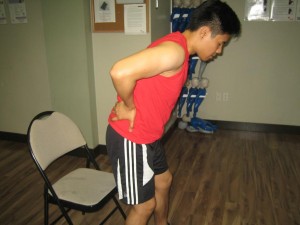The hip bone or coxal bone is considered one of the vital bones required for mobility but it is also prone to various problems that can make simple activities burdensome to individuals. Those who are obese and the elderly as well as those with bone conditions such as osteoporosis are susceptible to hip bone problems. On the other hand, even healthy adults can suffer from hip bone injuries. There are some hip bone injuries such as fractures or arthritis that requires surgical intervention and an extended recovery period. Minor problems can be easily treated with first aid measures and treatment.
Fractures to the hip bones
Hip bone fractures are common yet considered as serious health problems. Hospitals receive thousands of cases of hip fractures on a yearly basis with most cases affecting individuals 65 years old or older.

It is important to note that hip fractures take a long time to heal and can be debilitating. A small percentage of individuals with hip bone fracture die within a year after the injury since the immobility can lead to other health issues such as blood clots.
The treatment options for hip fractures typically include orthopedic surgery and prolonged traction. Since hip fractures are usually caused by falls, individuals are recommended to perform balance exercises and to undergo regular eye examinations. Take note that individuals with osteoporosis face a higher risk of getting a hip fracture.
Bursitis
The hip bone is prone to bursitis which is the inflammation of the small-sized sacs that surround the hip bone and other bones in the body. Those who are at high risk include women and middle-aged to elderly individuals.
Take note that the condition is often caused by an injury to the hip or exercise that places stress on the hip such as jogging. Bursitis is characterized for pain in the hip that tends to worsen when the individual is lying down or when standing after an extended period of sitting.
The treatment for this condition involves medications, avoiding activities that add stress on the hip and even the use of assistive devices such as crutches or a cane.
Arthritis
Once arthritis of the hip bone occurs, it is mainly caused by the loss of cartilage in the bones surrounding the hip. This condition usually occurs among individuals in their 60s or older. Other factors that can increase the risk for hip bone arthritis include obesity, inactivity and inflammatory diseases such as rheumatoid arthritis and lupus.
The symptoms include diminished mobility of the hip and pain in the hip, buttocks and groin. When treating this condition, it typically involves medications for pain relief, modifications to the lifestyle, use of a cane and surgery.
Tumors
In some cases, tumors can develop in the hip bone but most of them are benign. A distinctive indication of a tumor is a dull and oftentimes sleep-disruptive pain. Doctors were able to discover a tumor that has been aggravated by an injury.
